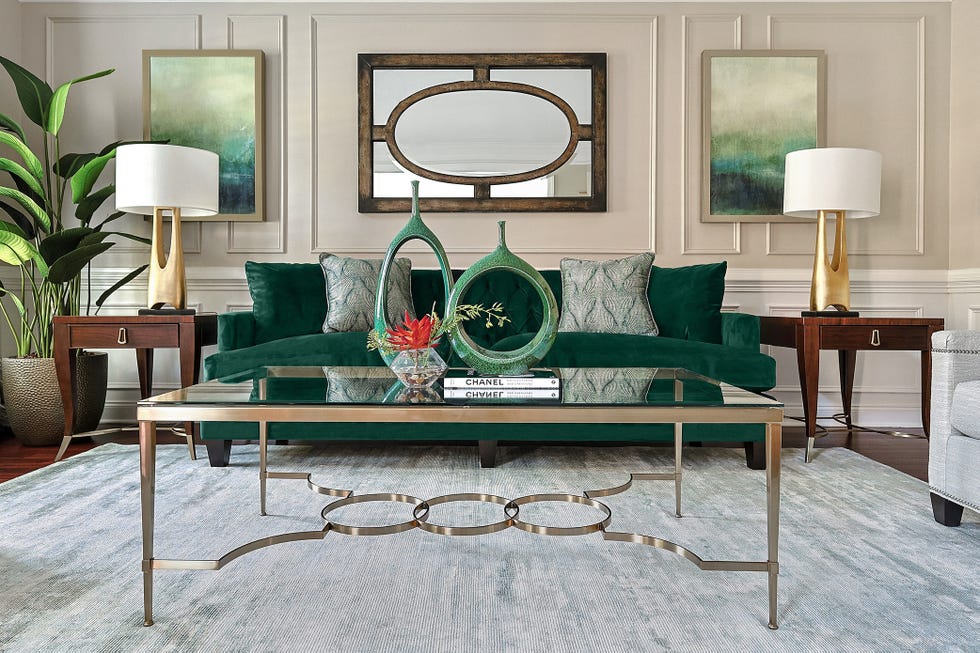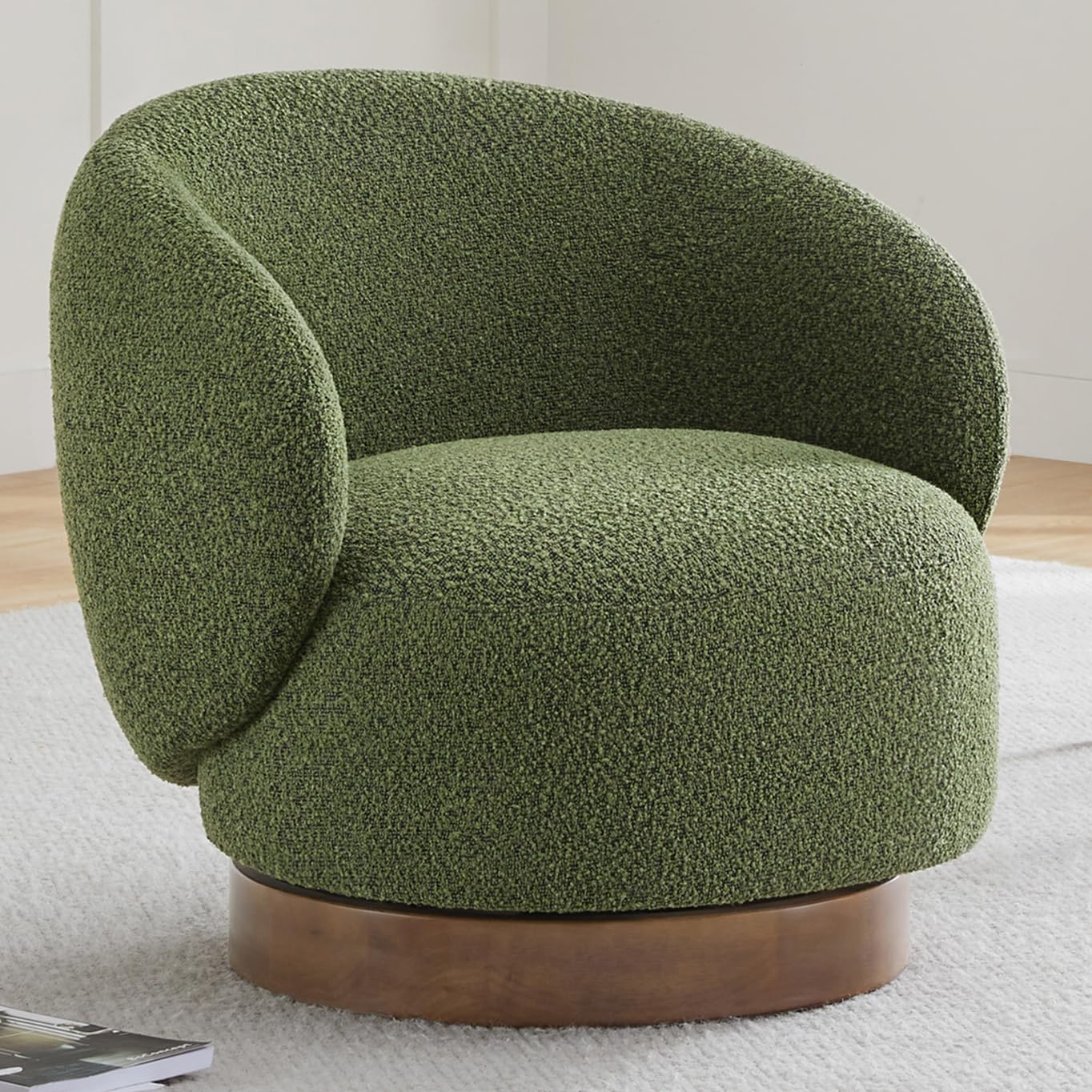The most sincere compliments are sometimes the ones paid when you’re not even in the room. And the most useful advice often isn’t advice you ever get to hear—it’s the let’s-get-real truths professionals share mostly with one another, often because they assume their feedback might be tough to swallow for the people who hire them.
So we asked designers at Decorating Den Interiors, a collective of individually owned and operated design firms across the U.S., about the tips they sometimes keep under wraps. They shared a few nuggets that, if you take them onboard, will help you achieve a productive designer-homeowner mind meld—and may well even earn you favorite-client status. Which, in turn, will definitely make your decorating project both more successful and a lot less stressful.
1. Don’t Take TV Design Shows Too Literally
We know that you know that a half hour that starts with a bland three-bedroom and ends with a stunning show home is going to involve some serious editing. But design-show watchers still often come away with misconceptions, says Camila Gusmao, owner and lead designer of a Decorating Den firm in Plantation, Florida, who created the bedroom above in a Fort Lauderdale apartment.
“They’ll show you the project’s hiccup points, the speed bumps along the way,” she says. “But then all is resolved so fast—it’s just, ‘Oh, we figured it out.’ It doesn’t show the rental fee for the apartment you have to stay in for an extra three weeks while it is getting sorted out!”
The pace of the shows can also set up unrealistic budget expectations, Gusmao points out. “The transformations are achievable. But people don’t understand that they’re often just showing you [part of] what it costs.” For example, she explains, the price tag for a stone countertop itself might flash on-screen, “but the design work behind it isn’t free. And then they have to buy the slab, have it delivered, the fabricator has to make it, it has to be installed, the designer has to spec it…” When a viewer heads to a designer to plan an IRL renovation, Gusmao says, the result can often be sticker shock.
2. Be Up-Front About Your Budget
“All roads lead back to the budget,” says Donna Rich, owner and lead designer of Maryland-based DL Rich Designs. “That’s usually the biggest impediment between a client and a designer: getting an understanding of what it will really take to accomplish the project.”
Barbara Hayman, owner and lead designer of Barbara Hayman Designs in Orlando, Florida, agrees. “I want to know what you’re thinking, so I can tell you what I can do for that amount and what can’t be done,” she says. “Then I can have that conversation. You know: ‘No, $3,000 is not enough to redo the entire bedroom.’”
She stresses that clients shouldn’t fear a budget conversation—which is just that, a conversation, not a deal-breaker. “Even if the number is unrealistic, I still want to know what it is,” Hayman says. “Sometimes they haven’t done any decorating in 10, 20, 30 years, so they have to bring their minds to 2025, when things cost a lot more.”
In fact, most designers expect to do some gentle education and level-setting about cost with a client who’s new to them—or to professional decorating in general. And they understand that discussions of money can feel uncomfortable at first. “People are hardwired to keep their finances close to the vest, but that’s the opposite of what you want to do with a designer,” Rich says. “We curate projects based on the client’s vision and their budget, so it’s important to be honest very early on about what your desired investment level is.”
3. Don’t Treat Your Designer Like Your Personal Shopper
Suzan Wemlinger, owner and principal designer of Suzan J Designs in Milwaukee, has fielded the occasional call from a homeowner who already knows exactly what they want—but those aren’t the kinds of clients she cultivates. “If you’ve already been to every store in town, and you’re calling just because you need help finding that item that’s in your head, I’m probably not for you,” she says. “Designers don’t just ‘pick things out.’”
Wemlinger hastens to add that she still greatly values client input: “You definitely should show me your Pinterest boards, your magazine clips.” But attempting to precisely replicate inspiration images isn’t a good use of a designer’s skill, talent, or time—nor is it even possible. “How are you going to lay out that tile you love if your kitchen isn’t exactly the same dimensions as the one on Pinterest?” she says. “I think about not just the look, but also the function and size and scale. Everybody has their superpower; this is what I do.” And as a client, you should let her.
4. Feel Free to Use “Old” Stuff in Your New Decor
The beautifully appointed living room sullied by the boyfriend/roommate/live-in dad’s huge, duct-tape-repaired sore thumb of a recliner is a sitcom trope. But there’s a kernel of truth there: Redecorating doesn’t mean you have to jettison the things you truly love. “I don’t think there’s any designer who’s not open to seeing what makes your home personal, because it will make the finished product look more like you,” says Jan Bertin, owner and lead designer of Bertin’s Interiors in Alexandria, Virginia. “My goal is to make the space feel happy for you, so I’d like to see what you have—even if it’s a piece you’ve relegated to the basement.”
It’s also the case that furnishings you may not feel strongly about can take on new possibilities under a fresh, professionally trained eye. Bertin recalls a project that called for a coffee table to fit in a tight space and work with a sectional that had already been selected. “I was coming up dry,” she says. “Then I saw a copper tray on a mantel in another room. It was just an old thing that the client probably found at a yard sale. But now it’s at the iron fabricator’s, having a base added. It’s going to be a stunning table, and it’s exactly the right size and look.”
5. Value Trust—and Cultivate It
“If my clients don’t trust me, the process is just not going to work,” says Hayman, who frequently works on homes whose owners live abroad. “Those clients just hand me the key and might not see the results for months. But it’s more than just trusting me in the design process—it’s trusting the value that I’m going to bring to the project. It’s trusting me to go outside of their comfort zone.”
She knows from experience that truly great design entails understanding not just a client’s style and taste, but also their personality, and even—though it might sound a bit hokey—their dreams and fears. “If I can get inside of their head a little bit, when I get to really know them on a deeply personal level, that’s when the magic happens,” Hayman says. If you can be open, honest, and even vulnerable with your designer, what will emerge, she promises, is a home that is “your sanctuary, your well-being, your wellspring—where everything comes from.”






